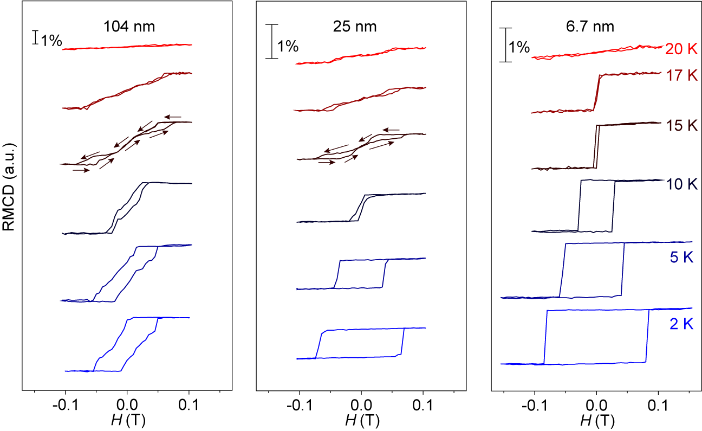The emergence of van der Waals (vdW) magnets greatly enriched our understanding of intrinsic magnetism in the 2D limit, beyond the conventional Ising model and XY model pictures. Different spin configurations in diverse materials enable the experimental realization of the well-established magnetism models. For example, Ising-type ferromagnetism (FM) is found in monolayer CrI3, while the XXZ-type antiferromagnetism (AFM) in bulk NiPS3is suppressed in monolayer NiPS3, both are consistent with the theoretical predictions. However, the existing vdWs magnets are still rare. Therefore, it is imperative to find more vdWs magnetic materials with different bandgaps and novel magnetic properties for applications in a wide variety of 2D magnetic and spintronics devices.
Through DFT calculations, Prof. Yang’s group found a 2D multiferroic materials CuCrP2S6and synthesized the single crystal successfully. 2D CuCrP2S6is a type-I multiferroic candidate (or a ferromagnetically ferroelectric material), where the ferromagnetic and ferroelectric polarization stems from the Cr and Cu elements, respectively. In experiments, the ferroelectricity was observed in 13.3 nm-thick CuCrP2S6, using piezo force microscopy (PFM) at room temperature. The ferromagnetism was observed from the hysteresis loop of the massively stacked nanosheets(Nanoscale, 2019,11, 5163).

Figure 1. The magnetic hysteresis loops of AgVP2Se6
Recently, Yang‘s group and Ye’s group found a new 2D quaternary vdW ferromagnetic semiconductor AgVP2Se6. The bulk ferromagnetic transition temperature TCof AgVP2Se6is 18.5 K. When the thickness of the AgVP2Se6flakes is reduced, enhanced out-of-plane magnetic anisotropy is observed. The 6.7 nm AgVP2Se6flake exhibits a rectangular hysteresis loop with a large coercive field of 750 Oe at 2 K and an undiminished TCof 19 K, proving itself a promising 2D hard-ferromagnetic semiconductor for future 2D spintronic devices. This work was published in Advanced Functional Materials (DOI: 10.1002/adfm.201910036).

Figure 2. The magnetic structures of CrPS4under the magnetic field along the c axis.
Prof. Yang’s group also collaborated with Prof. Zheng group from Zhejiang University and Dr. Maxim Avdeev of Australian Nuclear Science and Technology Organisation to study vdW antiferromagnet CrPS4. Complimentary magnetic, torque, and neutron diffraction measurements have been made to elucidate the metamagnetic transitions and the magnetic structure of high-quality CrPS4single crystals. By fitting of neutron diffraction results, an A-type AFM ground state is confirmed in bulk CrPS4below 38 K. When H is applied along the c axis (H∥c), a spin-flop transition is observed at around 0.7 T, corresponding to a canted interlayer AFM in the direction perpendicular to the c axis. The canted interlayer AFM phase eventually turns into out-of-plane ferromagnetic ordering, manifested by a spin-flip transition at about 8.5 T. This work was published in Advanced Materials (DOI: 10.1002/adma.202001200).
The above studies received support from the National Natural Science Foundation of China, Ministry of Science and Technology of China, Chinese Academy of Sciences, and Beijing Municipal Science and Technology Commission.
